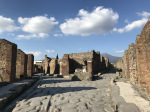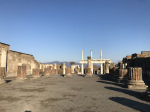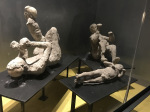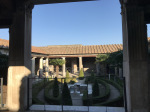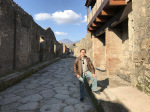When in Pompeii…
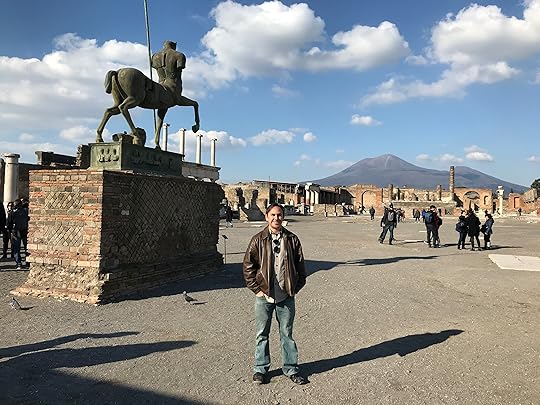
Living in California during the COVID-19 pandemic, there was a stretch of time in late March when the desolate downtown streets near my home bore a remarkable similarity to the abandoned boulevards of ancient Pompeii. Ironically, I had just visited the extensive ruins only a few months prior – late January of 2020. In hindsight, it’s almost unsettling how close in time my trip came to Italy’s virus outbreak.
Having visited plenty of ruins over the years, what struck me about Pompeii was how expansive the site really was. I had expected to spend just a couple hours strolling the scene; I ended up exploring the ancient city for almost an entire day, complete with worn out legs and blistered feet.
Although the crowds of people swarming the main Forum made for a stark reminder that this was a tourist site, as soon as I wandered down one of the wide cobblestone thoroughfares, I soon felt myself stepping back in time. The buildings were almost all standing and surprisingly well-preserved, thanks to the centuries buried in volcanic ash followed by more centuries of painstaking archaeological excavation.
After meandering around one crumbled city block for about a half hour – poking my head into various rooms of some of the scattered houses, now roofless – I consulted the map to get my bearings. I figured I had traversed a good chunk of the site. I was wrong. The section of the city I had explored barely covered a thumbnail’s space over my wide fold-out map.
The Pompeiian ruins really did consist of an enormous city to explore. Unlike most other sites in the world that I’ve visited, it wasn’t just a quick jaunt around some noteworthy monuments before moving on to the next attraction. Pompeii was a massive sprawl of cobbled streets filled with temples, residences, bath houses, villas, shops, statues, bakeries, brothels, laundromats, and almost every other business under the sun. All now abandoned for nearly 2,000 years.
The towering volcano, Mt. Vesuvius, loomed in the distance, visible from all sorts of vantage points throughout the city. I often found myself haunted at the thought of this bustling society getting struck down without warning on that afternoon in A.D. 79, when that first geyser of molten ash erupted from the volcano’s crater.
Moving back to the present day, more than ever the story of Pompeii serves as a somber reminder of how fragile our civilization can be.

